Are the swing and snatch interchangeable? Or do you have to do both?
David Whitley, former StrongFirst Certified Master Instructor quipped that “a snatch is a swing that ends up overhead” and a study by Brandon Hetzler, former StrongFirst Certified Senior Instructor, and colleagues confirmed it. The researchers found a similar mechanical output in both exercises and suggested “using kettlebell snatch and 2-handed swing exercise interchangeably for the ballistic component of athlete strength and conditioning programs.” In other words, if you are after power, either drill delivers.
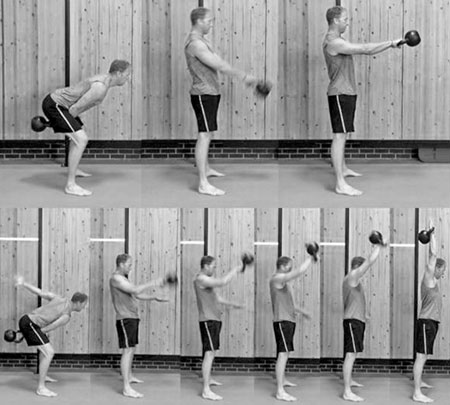
If you are a runner and have to pick one or the other, the swing might be a better choice. The above study observed that it has a greater “horizontal mechanical output” than the snatch. Here is why it matters.
Quad vs. Hamstring Strength in Runners
Russians measured the quad and hamstring strength of middle-distance runners of different levels. They learned that while the hamstring strength keeps growing until the runner reaches the elite level, the quad strength grows until the CMS level (high intermediate)—and then drops way down. Among the reasons identified by the researcher: less experienced runners jump up and down overusing their quads and the elite do not waste their energy vertically and “paw” the ground instead to propel themselves straight forward. (Myakinchenko, 1983)
What you have here is less of a “swing versus snatch” discussion and more of a “hinge versus squat.” Certainly, it is best to do both, but usually there is a justifiable bias for one or the other. For sprinters, focusing on the hinge also makes sense. Consider that the best 100m and 200m sprinters have predominantly fast hamstrings—as you would expect—but their quads tend to be intermediate. (Selouyanov, 2010). Although this reflects natural selection rather than training, it suggests that, to a sprinter, the hinge is more important than the squat.
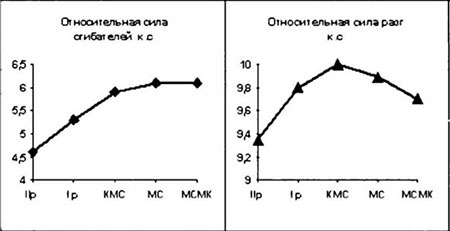
Swing Versus Snatch: Muscle Development
The swing dominates the snatch in lower-body strength development and hypertrophy, simply because one can swing a lot more weight. Ladies who get on a regular diet of two-handed swings with 32-48kg never fail to develop spectacular curves. And once a gent can confidently swing a pair of 32s—as opposed to being swung by them—posterior chain strength is no longer his #1 priority.
Both pulls are powerful developers of the upper back and the traps.
The one-arm swing rules in the midsection and glute training department. The abs contract powerfully when you perform a “kime” on the top of each rep. The obliques lock down to prevent you from being twisted and pulled forward by the heavy kettlebell. The glutes cramp to put you in a “standing plank.” In the snatch, your abs “open up” as the arm goes overhead which prevents the kime. The obliques do not have to work as hard, as the kettlebell stays close to your body and eventually stacks on top of it.
The snatch scores a win when it comes to burning fat. Geoff Neupert, former StrongFirst Certified Master Instructor, prefers it to the swing because the snatch works the arms and shoulder girdle harder. More muscle groups involved should translate to greater fat burning. In addition, Hetzler’s research shows that the kettlebell travels twice as far in a snatch rep than in a swing rep. He explains, “All things being equal—the same person swinging and snatching the same size kettlebell with the hard style approach—the snatch will accomplish more work… From a fat loss standpoint, snatches have a noticeable advantage.”
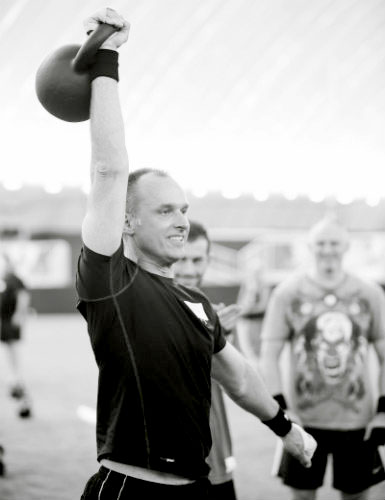
The snatch also has an edge in grip development. A long semi-vertical drop from an overhead lockout—or even a throw with a lighter kettlebell—loads the grip in a very “plyometric” manner. Such ballistic eccentric loading builds strength exceptionally well. And given the high number of total reps a snatching girevik will do each week, it builds Popeye forearms too.
The big strike against the snatch is a serious thoracic and shoulder mobility it demands—above what a typical Western gym rat and even an athlete possess.
The Final Score in the Swing Versus the Snatch
In summary, it is a tie:
- Both exercises are equally effective in building power.
- Both are equally effective in upper back development.
- The swing is superior for posterior chain and midsection development and strength.
- Per rep, the snatch burns more fat than the swing.
- The snatch has an advantage over the swing in grip development.
- The snatch demands great thoracic and shoulder mobility.
Provided mobility is not an issue and you are skilled in both, which one should you choose?
A good analogy is the barbell squat and deadlift. Both exercises work more or less the same muscle groups, yet each has its own edge. One can choose to do both to get the most benefits—at the expense of more complex programming. Or go minimalist, select one lift and polish it to perfection.
Swing, snatch, or both, you cannot go wrong.

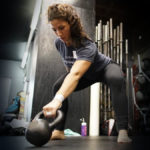
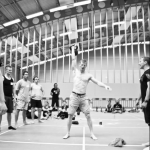


At the same weight, I’d choose the snatch of course, but I can’t snatch a 40kg bell whereas I can swing a 40kg bell. Swinging a 40 is much better than snatching a 24, for instance, so overall I personally think the swing is better exercise by far.
Very nice. Interesting comparison!
Very nice analysis!
Thanks, Pavel, for publishing this. It’s cleared up a lot of questions for me. But, as somebody who works construction, I think I’ll stay with swings for the most part as I beat up my hands enough at work. But the statement in the article: “And once a gent can confidently swing a pair of 32s—as opposed to being swung by them—posterior chain strength is no longer his #1 priority.” now leaves many new questions… I can totally see how this would be true, but how does one go about? I’ve tried double swings with a pairs of 24 kgs and it definitely gets the heart rate up more. I can swing the 40kg one arm in S&S protocol (100 reps in 5 min) now. So, I think I’m ready for double swings. I’m I? Do you swing on the outside of the legs or between the legs or both? What kind of reps and time frame renders “confidently”? How does one train double swings? Probably not everyday on this exercise? And also, once posterior chain strength is no longer my priority,what is my next strength priority?
Double swing is between the legs. It’s a subtly different move to the two arm swing. I’d recommend Kettlebell Strong by Geoff Neupert to really break down the double swing, there’s enough detail to give you perfect technique.
Interesting comparison – I view them as two very different exercises – using very different weights, I would love to swing a heavy bell and am working towards it. I have no desire to snatch more than a 24 kg bell though, frankly, I think I would be at risk of injury.
The fat burning is an interesting question as I certainly cannot match reps and weight between swing and snatch. 100 swings with a 32 kg KB is not too hard for me, but I think even 50 snatches with a 24 kg KB would wipe me out (or my arm would come off).
Equally the grip development is interesting – would 32 kg swings develop grip as effectively as 24 kg snatch?
Great article, I’m finding that swings have maintained my running cardio and pace even when I haven’t been running.
Been playing with this lately and have a comment/observation/question.
Most of us lockout the snatch like the pic above where the spine and pelvis are extended. As you say, the abs are not compressed.
But what about in the lockout of a press? Are the abs open like that?
For those who can control the forward and back tiliting of the pelvis, it is possible to pull the pelvis forward (posterior tilt) with the abs so they are used more like in a swing (kime or part of the kime). It is a bit advanced, but snatching a 24kg in this manner for sets of 10 smokes the abs fast. It is less efficient than the style used in the pics at the top but it will add some power and abs to snatches, IME.
In the overhead position of any KB lift, the abs/glutes need to be engaged from both a safety perspective and a performance perspective. The degree of that engagement will be 100% dependent upon the task at hand. If your lockout’s during the 5:00 snatch test are to the same degree as locking out a heavy barbell deadlift, then you have brought too much tension to the party.
In general, the overhead position should occur on a neutral pelvis (I’d argue that you can’t achieve a posteriorly tilted pelvis in a standing position without trauma) while maintaining a tall spine (a fully extended spine is also not possible in standing without trauma).